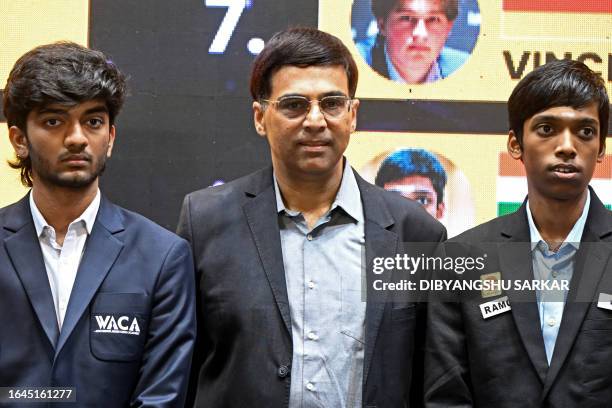
For a decade, Magnus Carlsen stood as the undisputed emperor of chess. A five-time World Chess Champion, five-time World Rapid Chess Champion, and eight-time World Blitz Champion, Carlsen had been the world’s number one ranked player since 2011 . He was the “final boss” whom no one could challenge, especially after he ended the reign of Indian legend Viswanathan Anand . But the tides are turning, and a new wave of Indian chess talents, nurtured by Anand himself, are now challenging and ultimately ending Carlsen’s era of supremacy.
Carlsen’s Ascent: The 2013 World Championship
The story of Carlsen’s dominance began on November 22, 2013, in Chennai, India. A then 23-year-old Magnus Carlsen, a prodigy from Norway who became a Grandmaster at 14 and world number one at 19 , faced the reigning five-time World Champion Viswanathan Anand. Despite Anand’s home-ground advantage and immense crowd support, Carlsen emerged victorious . After four initial draws, Carlsen won games five, six, and nine, clinching the World Championship title without a single loss against Anand on his home turf . This victory marked the dawn of a new era in chess .
For the next ten years, Carlsen’s dominance was absolute . He successfully defended his World Championship title against Anand again in 2014 and went on to win it a total of five times (2016, 2018, 2021) . His reign from 2013 onwards surpassed Anand’s five titles between 2000 and 2012 . Grandmasters like Fabiano Caruana and Ian Nepomniachtchi tried, but none could truly challenge his might . Carlsen was known for his complete game, his composure under pressure, and his ability to win half the match with his body language alone .
Anand’s Quiet Revolution: Nurturing India’s Future
While Carlsen was at his peak, a quiet revolution was brewing in India, spearheaded by none other than Viswanathan Anand . After his defeats to Carlsen, Anand gradually reduced his competitive play and shifted his focus to mentoring young talent . In 2020, he established the WestBridge Anand Chess Academy in Chennai, with the ambitious goal of producing India’s next World Chess Champion . Anand personally guided these young players from a tender age, alongside top international coaches, providing them with crucial international exposure . The academy emphasized not just chess tactics, but also mental fortitude, recognizing chess as a deeply psychological game .
The Rise of Praggnanandhaa: The First Cracks in the Armor
The fruits of Anand’s labor began to show within just two years . On February 21, 2022, 16-year-old Rameshbabu Praggnanandhaa, a product of Anand’s academy, delivered the first major blow to Carlsen’s dominance by defeating him in an online rapid chess event . Praggnanandhaa became only the third Indian, after Anand and Pentala Harikrishna, to achieve this feat . He handled the pressure with remarkable calm, avoiding risks and capitalizing on Carlsen’s rare mistakes . This historic victory brought him global recognition .
Praggnanandhaa continued to defeat Carlsen in multiple online tournaments over the next year, even when Carlsen was at his peak . Carlsen himself acknowledged Praggnanandhaa as a strong player . In 2023, Praggnanandhaa reached the FIDE World Cup final, overcoming Grandmasters like Hikaru Nakamura and Fabiano Caruana . Although he ultimately lost to Carlsen in the classical chess tie-breaker, he put up a fierce fight, marking the first time a young player had challenged Carlsen so intensely in a high-stakes match .
D. Gukesh: The New World Champion and Carlsen’s Conqueror
Alongside Praggnanandhaa, other formidable young talents like Arjun Erigaisi, Raunak Sadhwani, and Nihal Sarin emerged from Anand’s academy . But it was D. Gukesh, another of Anand’s protégés, who delivered the decisive blow to Carlsen’s reign .
In 2023, Magnus Carlsen voluntarily relinquished his Classical World Championship title, citing a lack of motivation and nothing left to prove . This decision opened new doors for Indian players . In April 2024, 17-year-old Gukesh won the Candidates Tournament, overcoming more experienced players under immense pressure. He became the youngest player to win the tournament, breaking Carlsen’s own record .
Then, on December 12, 2024, in Singapore, Gukesh made history by defeating defending champion Ding Liren in the World Chess Championship final . At just 18 years and 195 days old, Gukesh became the second Indian (after Anand) to be a Classical Chess World Champion and, remarkably, the youngest ever Chess World Champion, surpassing Garry Kasparov’s long-standing record .
While Gukesh became World Champion, he had yet to defeat Carlsen in a direct classical game . That changed on June 1, 2025, when Gukesh finally defeated Carlsen in the Norway Chess tournament . It was a surprising victory, as Gukesh was largely on the defensive, but Carlsen made a critical mistake, and Gukesh capitalized, leading to Carlsen’s visible frustration . Just a month later, on July 1, Gukesh defeated Carlsen again in rapid chess, a decisive win even after Carlsen attempted to pressure him by calling him a “weak player” .
Garry Kasparov himself praised Gukesh, suggesting that Carlsen’s dominance could now be questioned . The video highlights that five Indian players under 21 now boast ratings over 2700, and India has begun winning team tournaments like the Olympiad . Carlsen’s aura has diminished; Indian players no longer fear facing him, they defeat him . Carlsen himself has admitted that young Indian players are “fearless” and constantly improving, representing the future of the game.
The video concludes by emphasizing Viswanathan Anand’s profound contribution. His academy has produced these world-conquering players , and his disciples are now ending the dominance of the very player who once ended his own. The torch has truly been passed.